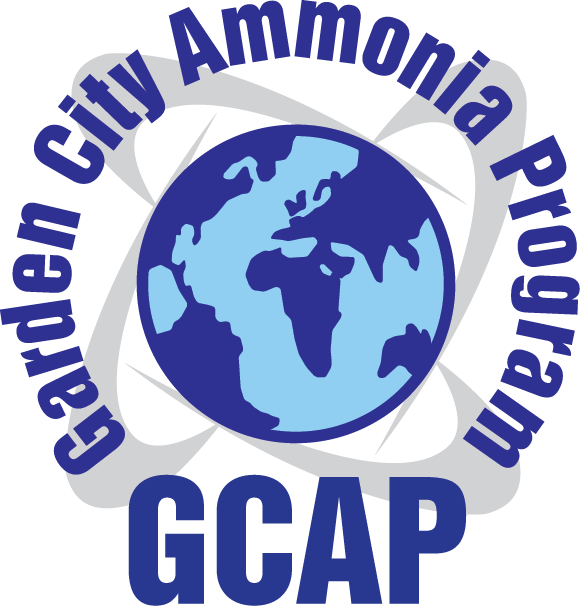I. Safety & Lead Tech Information "For Equipment Room Compliance"
|
1. Work with ammonia out side of the refrigeration system for testing and expansion rates. Live exercise with water being injected into ammonia liquid. |
2. Guidelines for ammonia sensors and calibrations. |
3.Guide to good practices for the operator of an ammonia refrigeration system (basic on Bulletin R1 iiar) |
4.Guidelines for: IIAR Bulletin 107, Suggested Safety and Operating Procedures when making Refrigerating Plant Tie-In's. |
5. Guidelines for: IIAR Bulletin 108, Water Contamination in Ammonia Refrigeration System |
6. Guidelines for: IIAR Bulletin 109, Minimum Safety Criteria for a Safe Ammonia Refrigeration System |
7. Guidelines for: IIAR Bulletin 110, Start-Up, Inspection and Maintenance of Ammonia Mechanical Refrigeration System. |
8. Guideline for: IIAR Bulletin 111, Ammonia Machinery Room Ventilation |
9. Guidelines for: Bulletin 112, Ammonia Machinery Room Design |
10. Guidelines for: Bulletin 114, Identification of Ammonia Refrigeration Piping and System Components. |
11. Guidelines for: Bulleting 116, Avoiding Component Failure in Industrial Refrigeration System by Abnormal Pressure or Shock. |
II. Advance Troubleshooting
|
1. Corrective action to discrepancies in your systems. |
2. Demonstrate proper techniques is piping to suction headers. |
3. Oil Analysis and sampling. |
4. Adjusting Liquid Injection Cooling High Stage (soc or Lic cooling) Hands-on Demonstration |
5. Adjusting Liquid Injection Cooling Low Stage Hands-on Demonstration |
6. Troubleshooting Heat Exchangers for leaks and efficiencies. Short cuts and signs |
III. Flooded Control Stations and Defrost for Blast Freezers
|
1.Air Defrost for Surge Drums |
2. Water Defrost for Surge Drums |
3. Hot Gas for Surge Drums |
4. Sprayed Defrost for Surge Drums
|
IV. Air Evaporator Defrost and Piping
|
1.Hot gas |
2.Naigar Systems |
3.Electrical Defrost
V. Compressors using Economizer Ports and P&ID"S on systems |
1. Back Pressure Regulators on CPR's |
1. Deferent types of Controls and Feeds with drawings |
2. Critical Safety Controls with P&ID"s on CPR's |
VI. Over Feed Ratios and Set Points
|
1. Hand Expansion Valves Capacity Tables |
2. Set Points for Hansen, Phillips, and Henry Hand Expansion Values |
3. Setting Procedures for set points of flows of refrigerate across expansion valves |
VII. Value Stem Setting for Manual Operations
|
1. Hansen |
2. Phillip |
3. Henry |
4. Hubbell |
VIII. Back Pressure Regulator
|
1 Drawings and troubleshooting for A4AB,A4WB,A4AD,A4WD,A4AD,A4AOE,A4AS |
A4WS, A4AT All valves will be looked at for RS/Hubbell/Hansen on back pressure regulator |
IX. Internal Operations of Solenoid Valves
|
1. All Pilot Valves |
2. Direct Acting Valves |
3. Example S4A, S4W, S5A, S6N, S7A, S8F, S9A S9W |
X. Transfer Ammonia
|
1. Dump Trap to CPR |
2. Dump Trap to HPR with Interrupter Valve |
3. Dump Trap to HPR with Gravity Flow |
4. Dump Trap to HRP with Pump |
5. Pump to HRP |
6. Transfer Hose and P.D. |
7. Three way valves and operation functions |
XI. Water Testing in NH3
|
1. Build a water testing kit |
2. Water study in ammonia |
3. Ice study in ammonia |
|
XIII. Relief Valves
|
1. Atmospheric Piping |
2. Hydrostatic Piping |
3. Sizing Relief Valves |
4. Oil Pots Relief Valves |
5. Liquid or Gas Relief |
XIV. Competency Skills
|
1. Follow oral instructions: Listen for and identify key words . Listen for words that identify a procedure. Listen for steps or actions to be performed. Listen for clues regarding the order or sequence in which a task is performed. |
2. Participate in group communication activities. |
3. Estimate, apply and solve problems involving fractions, decimals, percentages, and real numbers. |
4. Convert common units of measurement within and/or across measurement systems (metric/English, etc.). |
5. Construct and interpret tables, charts, maps, and/or graphs. |
6. Compile and maintain records, logs, lab notebooks, and other documents. |
7. Build group consensus: Clarify statements. Reconcile disputes and disagreements, Propose alternative plans for action. Respond positively to ideas and suggestions. Express agreement or neutrality. Demonstrate conflict resolution skills. Express disagreement diplomatically. |
8. Set priorities or the order in which several tasks will be accomplished. |
